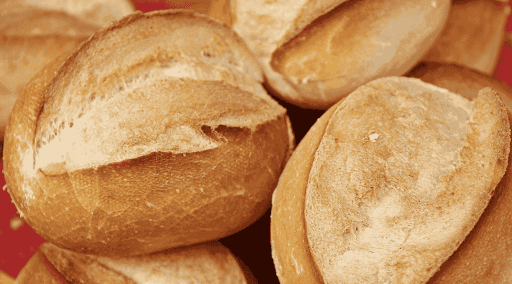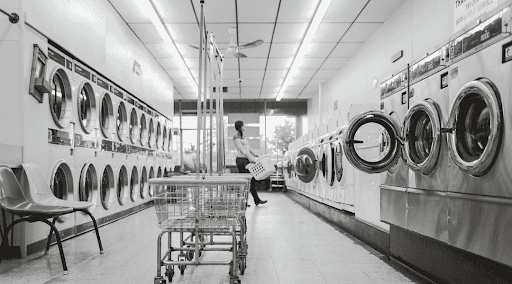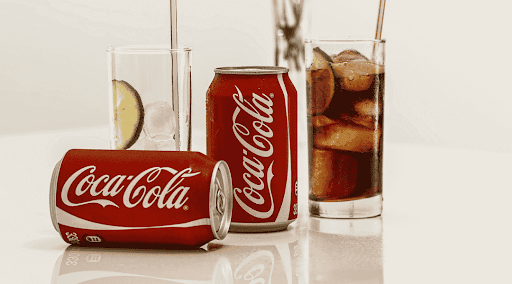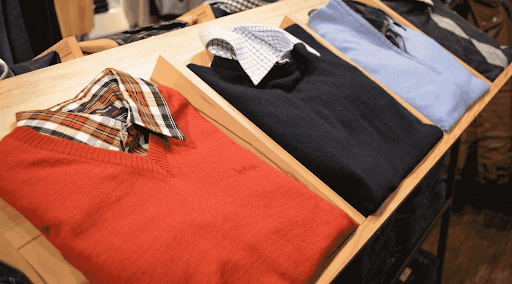
What are consumer goods? Main product groups and trends 2025
Consumer goods are an essential part of daily life, from meals and clothing to everyday conveniences. Beyond serving basic needs, consumer goods also open up significant opportunities for businesses. This article explains what consumer goods are, introduces key product categories, and explores the major trends in 2025.
1. What Are Consumer Goods?
Consumer goods are a familiar concept, closely associated with essential products that directly serve people’s daily living needs. These are not merely ordinary products but also an important link in the economic development chain, significantly influencing consumer behavior and market operations.
1.1. Current Status of the Consumer Goods Market
In the past, customers mainly shopped at traditional stores. Today, e-commerce and modern retail channels have become the popular choice. Convenience, product variety, and quick price comparison have made online shopping increasingly dominant.
Moreover, the “smart consumption” trend is on the rise. Shoppers now care not only about price but also about product quality, origin, and safety in the production process.
Health, environmental factors, and sustainability are becoming crucial criteria in product choices. This compels businesses to innovate production processes, adopt green technologies, and enhance product transparency to meet growing expectations.
In Vietnam, consumer purchasing power continues to grow positively thanks to a young population and rapid urbanization. However, competition is also intensifying as more international brands enter the market, requiring domestic businesses to strengthen production capacity and marketing capabilities to maintain market share.
1.2. Factors Affecting Consumer Purchasing Power
Consumer purchasing power is influenced by many factors. Macroeconomic conditions play a foundational role — as average income increases, consumers tend to spend more on products that provide not only basic needs but also improved life experiences. Conversely, during economic downturns, shopping behavior tightens, focusing on essential, reasonably priced goods.
Beyond economics, lifestyle and social awareness changes also have major impacts. Modern consumers are increasingly health-conscious and willing to choose organic, natural, or traceable products.
Technology also plays a major role: the growth of e-commerce, e-wallets, and logistics systems makes shopping easier and faster than ever.
Another important factor is the global trend toward sustainable consumption. Brands that integrate green messaging, use eco-friendly packaging, and show social responsibility often gain greater consumer trust.
This has driven strong demand across many industries. Therefore, businesses must innovate production processes and combine them with effective communication strategies to build lasting customer trust.
2. Common Types of Consumer Goods
Consumer goods are divided into several categories, each reflecting different shopping habits and spending levels.
2.1. Fast-Moving Consumer Goods (FMCG)
Fast-moving consumer goods (FMCG) are products purchased repeatedly and frequently, such as food, beverages, and personal care items. These products have high turnover rates and large consumption volumes, serving as the “backbone” of the consumer goods market.

Despite economic fluctuations, basic human needs remain constant, creating major opportunities for businesses focusing on FMCG production.
Learn more: The world of the fast-moving consumer goods industry
2.2. Durable Consumer Goods
Unlike FMCG, durable consumer goods have longer lifespans, higher values, and are used for many years—such as electronics or home appliances. Although purchase frequency is lower, each transaction holds high value, requiring businesses to invest more in quality, design, and after-sales service.

Modern consumers care not only about durability but also about energy efficiency, eco-friendliness, and aesthetics. Therefore, producing durable goods requires technological innovation combined with long-term brand strategies to build consumer trust.
2.3. Convenience Consumer Goods
Convenience goods cater to modern consumers’ need for quick, hassle-free options—like small snack packs, canned drinks, or ready-to-eat meals. Though each purchase may have low economic value, these products capture large market shares due to convenience and continuous demand.

For businesses, producing convenience goods means understanding consumers’ busy lifestyles while ensuring product safety, hygiene, and consistent quality. This is a highly promising segment in major urban areas where the pace of life is fast.
2.4. Selective Consumer Goods
Selective consumer goods involve more deliberate purchasing decisions—such as fashion, premium cosmetics, or personal devices. Consumers often compare price, quality, and brand before buying. Thus, brand value and customer experience are crucial in this segment.

Businesses must invest heavily in marketing, brand reputation, and product differentiation. Only then can selective consumer goods production offer a sustainable competitive advantage.
2.5. Specialty Consumer Goods
Unlike the above groups, specialty consumer goods target luxury or exclusive markets—such as high-end watches, fine jewelry, or handcrafted artworks. Buyers choose these products not only for utility but also for emotional value, self-expression, and social status.

To succeed in producing specialty goods, companies must invest seriously in materials, craftsmanship, and emotionally rich brand storytelling. Though niche, this segment offers high profit margins and outstanding value when approached correctly.
Classifying consumer goods is not merely academic—it serves as a compass for both consumers and businesses. Understanding what consumer goods are and selecting the right focus area enables companies to strengthen their position and capture 2025’s market trends.
Learn more: Coffee Market Q4/2025: Opportunities for Vietnamese Businesses
3. Consumer Goods Production Trends in 2025
The consumer goods industry is undergoing strong transformation to meet rising customer expectations. Consumers now seek not only products that meet essential needs but also sustainable, tech-driven, and personalized experiences.
3.1. Strong Growth of Green and Sustainable Consumer Goods
Consumers today are increasingly aware of environmental impacts. Recyclable packaging, eco-friendly materials, and energy-efficient production are becoming key purchase drivers.
Many surveys show that customers are willing to pay more for products associated with “green” messages and social responsibility. This motivates consumer goods manufacturers to integrate sustainability into product design and production models.
This shift not only enhances competitiveness but also builds long-term brand trust and identity in the market.
3.2. Digital Technology in Consumer Goods Manufacturing
Technology is becoming the core of production innovation. The use of AI, IoT, and automation helps businesses monitor processes, cut costs, and improve quality.
Through big data analytics, businesses can quickly grasp consumer behavior changes, allowing timely product improvements and market-fit solutions.
A tech-driven production line not only ensures efficiency but also brings companies closer to smart, sustainable, and effective manufacturing models.
3.3. Personalized Shopping Experiences
Consumers now want more than just functional products—they seek understanding and personalized experiences in every purchase.
Consumer goods companies can leverage behavioral data to recommend suitable products, customize packaging, or offer personalized promotions. Small actions like these make customers feel valued.
When shopping experiences become personal and engaging, brand–consumer relationships strengthen, increasing long-term loyalty.
In summary, consumer goods production in 2025 revolves around three pillars: sustainability, technology, and personalization. By flexibly combining these, businesses can meet current needs, create long-term value, expand markets, and reinforce customer trust.
4. Opportunities and Challenges for Consumer Goods Businesses
In 2025, the consumer goods market presents both expansion opportunities and challenges that demand innovation in manufacturing.
4.1. Opportunities for Domestic and International Growth
The 2025 consumer goods market offers a promising outlook for Vietnamese businesses. According to the General Statistics Office, total retail sales of goods and consumer services in the first seven months reached over VND 3.99 quadrillion (about USD 151 billion), up 9.3% year-on-year. This highlights stable purchasing power and growing consumer demand.
Retail goods alone accounted for 76.4% of total revenue, with a 7.8% growth rate. Food and essential goods rose 9.4%, apparel 6.4%, and home appliances over 5.5%. These figures reflect not only domestic market recovery but also sustainable industry potential.
At the same time, e-commerce continues to propel Vietnamese consumer goods into global markets. Today’s consumers care about quality, origin, and sustainability. Businesses that combine production innovation with transparency and green strategies will hold strong competitive advantages.
4.2. Challenges in Production and Competition
Alongside opportunities come challenges. The consumer goods manufacturing sector faces rising material costs, strict environmental requirements, and rapidly changing shopping behaviors. Increasing competition forces companies to continuously innovate in technology, design, and supply chains.
Moreover, building a socially responsible brand image has become essential. Companies that adapt quickly will stand firm in this volatile market.
Opportunities and competition coexist in the consumer goods sector. Those investing in quality, technology, and sustainable strategies will gain a competitive edge — the key to conquering both domestic and global markets.
5. The Future of Consumer Goods Production in Vietnam
Vietnam’s consumer goods sector is entering a promising yet challenging phase. Consumers are increasingly focused on quality, sustainability, and personalized experiences. Therefore, businesses must go beyond simply defining what consumer goods are — they must rethink their market approaches.
This requires strong innovation in production processes, from applying modern technologies to optimizing green supply chains. Brands that balance profitability with social responsibility will gain long-term advantages.
AGlobal – the best cross-border e-commerce solution for businesses.
Register for a free 1-on-1 consultation tailored to your business sector Here!
